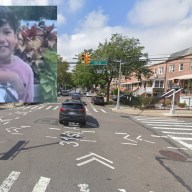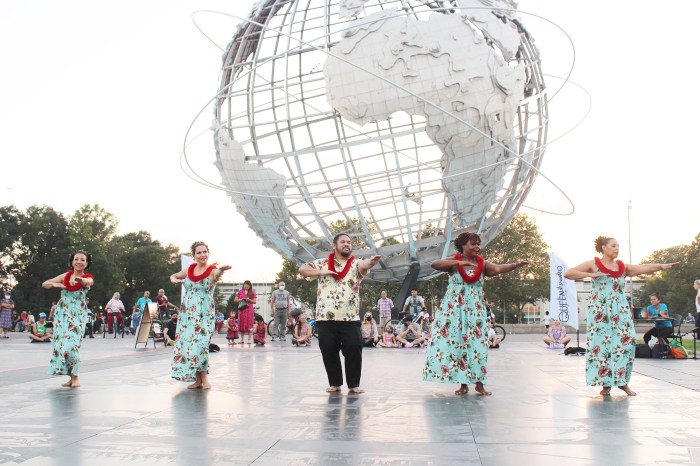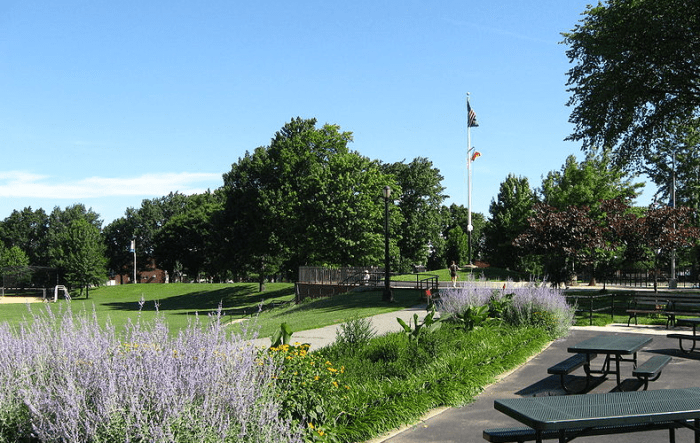By Alex Christodoulides
When it comes to motherhood, many of the preoccupations are the same, regardless of class or income — staying healthy, making sure the children get an education, keeping house, earning a living — but for poorer mothers the concerns loom larger. A new photography exhibit at Queens College examines the ways in which certain public policies create and sustain poverty in the United States and how they disproportionately affect women.
Queens College's Godwin-Ternbach Gallery is currently showing “Beggars and Choosers: Motherhood is Not a Class Privilege in America,” which comprises 56 photographs organized around themes of work and wages, education, health, child care and incarceration. Panels outlining each theme also highlight the public-policy-related challenges lower-income women may face in each situation. The mothers in the photos may be young, poor, disabled, nonwhite, on welfare, in prison, immigrants or lesbian couples, but they share the distinction of being too something for policymakers to regard them as legitimate mothers.
In Paula Lerner's photo “Mom, I'd rather do it myself,” a mother ties the shoelace of her tight-lipped young son, who stares impatiently into the distance. The urge to keep up appearances is strong for this woman, whether or not her son understands or cares why she wants him to look presentable.
A text box below the black-and-white print offers some context. Darla grew up the daughter of a welfare mother. Determined to avoid the same fate, Darla left home at 15 and supported herself working in bars, where she met the man who became her husband. She settled in as the mother of three children. Widowed at 35, with no means to support her family, Darla reluctantly went on welfare.
Nineteen-year-old Christy cavorts with her son Gabriel in another image. All seems carefree, but the accompanying text is Christy's description of how hard it is to make ends meet on welfare.
Welfare gives Christy $490 per month, of which rent takes $250, she says. “I can't go to the movies or buy clothes for myself,” she says. Sometimes she tries not to eat so that Gabriel can have more, she says.
As a placard explains, welfare mothers are locked into the program, in a sense, because if employment carries them past a certain financial threshold, they will lose their federal health benefits even though the job may not offer insurance.
Nancy Pastor's photo “Jasmine's World” shows a bright-eyed 4-year-old girl sandwiched between her developmentally disabled parents, Brenda and James, in the back seat of a car on a shopping trip with the parents' social worker.
“Brenda got her tubes tied when Jasmine was born. She knew her own limitations. But that desire to reproduce was strong,” says social worker Pat Hanson in the text box below the photo. “On the one hand, they shouldn't have had children, but on the other hand, Jasmine is here. And Jasmine is a jewel.”
The mundane tasks of tying shoelaces and going to market, housework and self-care, meeting the children at the school steps at 3 p.m., missing and mourning them, make up these women's worlds, where tight finances keep their experience and opportunities narrow and constricting.
One photo from Gloucester, Mass., dates to the 1990s and shows a teen mother — a decade before 17 girls at in the economically depressed coastal town became pregnant by the end of the 2007-08 academic year, leading to a national media frenzy (though the more sensational aspects of the tory were later debunked) — while the accompanying text speculates that the girl was seeking unconditional love and got pregnant because she did not see any alternatives to find it.
For some mothers depicted in the exhibit, ensuring their children's education is paramount, something they see is the key to more opportunities and a better life.
A woman hugs her daughter in a school hallway in “Lillia at School.” Lillia, a migrant worker in Washington state, has gone to the school to discuss with the teacher her concerns that because the family moves frequently, her daughter's schoolwork may suffer, the accompanying text explains.
For others, a lack of opportunities to support themselves and their children further narrows their horizons. Text on a placard outlining the issues for the “Women in Prison” section says that the majority of incarcerated female prisoners are there for nonviolent offenses such as fraud or prostitution. Because there are fewer facilities for women prisoners, mothers often have to be far from their families, who cannot easily afford to visit.
“This is a particularly important exhibition at this moment in time, when we are seeing the largest divisions and disparities in social classes in our society since the Great Depression,” said Godwin-Ternbach Director Amy Winter.
Curated by award-winning historian Rickie Solinger, the show has previously stopped at Duke University, Brown University, Texas A&M, and state universities in California, Colorado, Ohio and Mississippi.
If You Go:
Beggars and Choosers: Motherhood is not a Class Privilege in America
Where: Queens College's Godwin-Ternbach Gallery in Klapper Hall, 65-30 Kissena Blvd., Flushing
When: Through Sept. 27, Monday-Thursday 11 a.m.-7 p.m., Saturdays 11 a.m.-5 p.m.
For More: 718-997-4747 or -4724, or visit www.qc.cuny.edu/godwin_ternbach


































